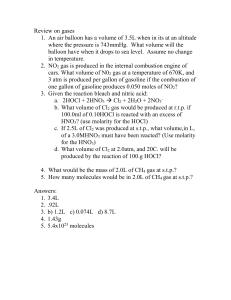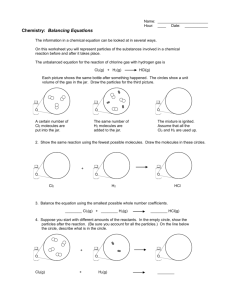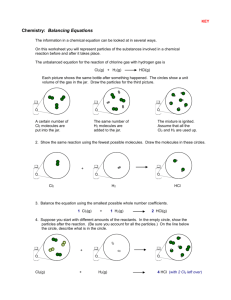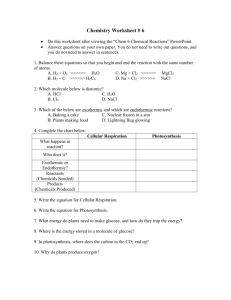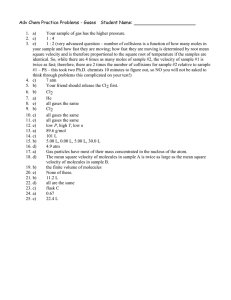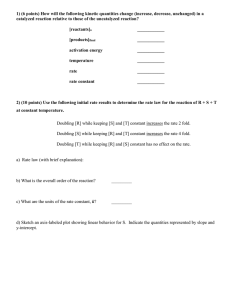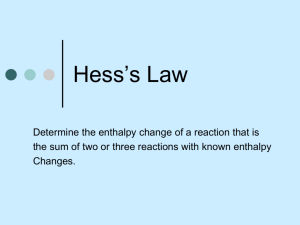F1411 -t4 .doc
advertisement
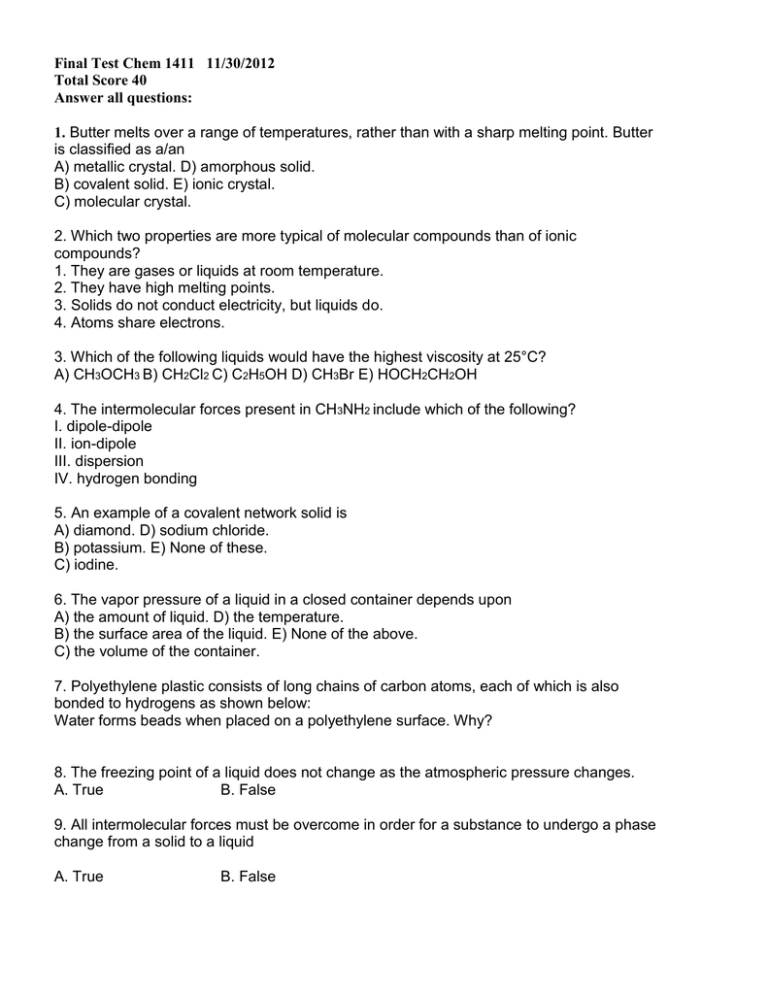
Final Test Chem 1411 11/30/2012 Total Score 40 Answer all questions: 1. Butter melts over a range of temperatures, rather than with a sharp melting point. Butter is classified as a/an A) metallic crystal. D) amorphous solid. B) covalent solid. E) ionic crystal. C) molecular crystal. 2. Which two properties are more typical of molecular compounds than of ionic compounds? 1. They are gases or liquids at room temperature. 2. They have high melting points. 3. Solids do not conduct electricity, but liquids do. 4. Atoms share electrons. 3. Which of the following liquids would have the highest viscosity at 25°C? A) CH3OCH3 B) CH2Cl2 C) C2H5OH D) CH3Br E) HOCH2CH2OH 4. The intermolecular forces present in CH3NH2 include which of the following? I. dipole-dipole II. ion-dipole III. dispersion IV. hydrogen bonding 5. An example of a covalent network solid is A) diamond. D) sodium chloride. B) potassium. E) None of these. C) iodine. 6. The vapor pressure of a liquid in a closed container depends upon A) the amount of liquid. D) the temperature. B) the surface area of the liquid. E) None of the above. C) the volume of the container. 7. Polyethylene plastic consists of long chains of carbon atoms, each of which is also bonded to hydrogens as shown below: Water forms beads when placed on a polyethylene surface. Why? 8. The freezing point of a liquid does not change as the atmospheric pressure changes. A. True B. False 9. All intermolecular forces must be overcome in order for a substance to undergo a phase change from a solid to a liquid A. True B. False 10. Referring to graph below phase diagram of compound. 2.52.0P(atm) 1.51.00.5- A l 0 l 60 10 B C l 80 l l l 120 160 200 T(oC) (a) What physical state would this compound exist at 0 oC and 760 mm Hg? (b) What is the point C known as? 1 1 (c) Define critical temperature? Indicate the Tc in the graph: (d) What is the line CB separating? 1 1 (e) What is the state of the substance in the region enclosed by the points ABC? 1 (f) What would happen if at 10 oC, the pressure was dropped from 2.0 to less than 0.5 atm? (g) If at 1 atm the temp was gradually raised from 25 oC to 90 oC, what would happen to a sample of this compound? 3 (i)What does the sloping of the graph CA towards the Y-axis indicate? [ Y-axis is the Pressure in atm and X-axis is Tem. in oC]? 1 11. Give the number of lone pairs around the central atom and the molecular geometry of CBr4. A) 0 lone pairs, square planar D) 1 lone pair, trigonal bipyramidal B) 0 lone pairs, tetahedral E) 2 lone pairs, square planar C) 1 lone pair, square pyramidal 12. According to the VSEPR theory, which one of the following species is linear? A) H2S B) HCN C) BF3 D) H2CO E) SO2 According to the VSEPR theory, which one of the following species is linear? A) H2S B) HCN C) BF3 D) H2CO E) SO2 13. 14. The bond angle in Cl2O is expected to be approximately A) 90° B) 109.5° C) 120° D) 145° E) 180° 1 15. Which one of the following molecules is polar? A) PBr5 B) CCl4 C) BrF5 D) XeF2 E) XeF4 16. The C–N–O bond angle in nitromethane, CH3NO2, is expected to by approximately A) 60° B) 90° C) 109.5° D) 120° E) 180° 17. Which of the following species has the largest dipole moment (i.e., is the most polar)? A) CH4 B) CH3Br C) CH3Cl D) CH3F E) CH3I 18. N,N-diethyl-m-tolumide (DEET) is the active ingredient in many mosquito repellents. What is the hybridization state of carbon indicated by the arrow in the structure of DEET shown below? A) sp B) sp2 C) sp3 D) sp3d E) sp3d2 19. The number of pi bonds in the molecule below is A) 2 B) 4 C) 6 D) 10 E) 15 20. According to Molecular Orbital Theory, two separate px orbitals interact about the x-axis to form what molecular orbitals? A) and * D) , *, and B) and * E) , *, , and * C) , * and Consider the species Cl2+, Cl2, and Cl2–. Which of these species will be paramagnetic? A) only Cl2 B) Cl2+and Cl2– C) Cl2+ and Cl2 D) all three are paramagnetic E) Cl2 and Cl2– Complete the following table. Hybrid type Geometry of electron pairs a ___________ linear b sp3 _________ c ___________ trigonal bipyramidal d ___________ octahedral e sp2 __________ 22. 5 23. Which one of the following compounds utilizes both ionic and covalent bonding? A) Na2SO4 B) AlCl3 C) PO4 3- D) NH4+ E) CaO 24. Write the Lewis dot symbol for A.chloride ion, B. Sulfate ion, C. CO and D.NH2-NH2 4
